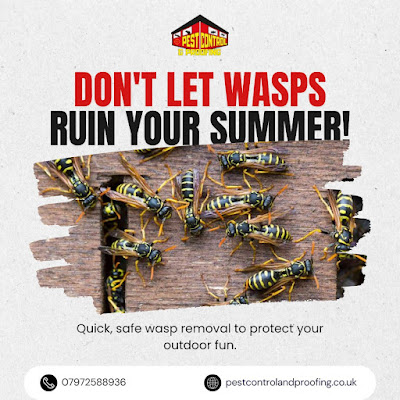Effective Solutions for Rodent Proofing, Bird Proofing, and Insect Pest Control
Pest control is an essential aspect of maintaining a safe and healthy environment in both residential and commercial settings. Whether you're dealing with rodents, birds, or insects, taking proactive measures can prevent infestations and protect your property. In this blog, we’ll explore effective strategies for rodent proofing, bird proofing, and insect pest control, ensuring you have the information you need to create a pest-free space.
Rodent Proofing: Safeguarding Your Home from Unwanted Guests
Rodents, such as mice and rats, can cause significant damage to your property and pose health risks. Effective rodent proofing involves a combination of prevention and control measures:
1. Seal Entry Points:
Inspect your home for potential entry points where rodents might gain access. These can include gaps around pipes, vents, and windows. Use materials such as steel wool, caulk, or foam insulation to seal these openings effectively. Remember, rodents can squeeze through surprisingly small spaces, so thoroughness is key.
2. Keep Food Secure:
Store food in airtight containers and ensure that pantry items are well-sealed. Regularly clean up crumbs and spills to eliminate potential food sources that attract rodents. This practice not only helps in rodent proofing but also promotes good hygiene in your home.
3. Maintain Cleanliness:
Declutter your home and yard to minimize hiding spots for rodents. Keep trash in sealed containers and dispose of it regularly. A clean environment reduces the likelihood of rodent infestations and helps you spot any potential issues early.
Bird Proofing: Protecting Your Property from Feathered Intruders
While birds can be beautiful and beneficial, they can also cause damage to buildings and pose health risks through droppings. Implementing effective bird proofing strategies can protect your property:
1. Install Physical Barriers:
Consider installing bird spikes, netting, or screens on ledges, roofs, and other areas where birds like to perch. These barriers deter birds from nesting and roosting on your property, helping to prevent damage and mess.
2. Use Deterrents:
Visual and auditory deterrents can effectively keep birds away. Reflective tape, scare balloons, and sound devices can create an unwelcoming environment for birds. Regularly change the location of these deterrents to maintain their effectiveness.
3. Regular Maintenance:
Keep gutters and rooftops clear of debris and nests. Regular maintenance helps prevent birds from settling in your property. Additionally, trim overhanging branches that may provide access to your roof or ledges, further reducing the risk of bird infestations.
Insect Pest Control: A Comprehensive Approach
Insects can quickly become a nuisance, affecting your home’s comfort and hygiene. Effective insect pest control requires a multifaceted approach:
1. Identify the Problem:
The first step in insect pest control is identifying the type of pest you’re dealing with. Different insects require different treatment methods, so understanding their habits and habitats is crucial for effective control.
2. Use Preventive Measures:
Seal cracks and crevices, keep windows and doors properly screened, and maintain cleanliness to deter insects from entering your home. Regularly inspect your property for signs of infestations, such as droppings or nests, so you can act quickly if necessary.
3. Consider Professional Help:
For persistent infestations, consider hiring a pest control professional. They can provide targeted treatments and ongoing maintenance plans tailored to your specific needs, ensuring effective control of unwanted insects.
Conclusion: Creating a Pest-Free Environment
Effective rodent proofing, bird proofing, and insect pest control are essential for maintaining a safe and comfortable living environment. By taking proactive measures, such as sealing entry points, installing barriers, and keeping your property clean, you can significantly reduce the risk of infestations.



.jpeg)
Comments
Post a Comment